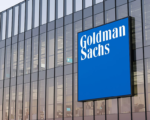A few years ago, establishing a presence in Europe was all the rage for North American VCs. From OMERs and Lightspeed to Bessemer Venture Partners, firms of all sizes flocked to the market, spurred by the Spotify IPO’s indication of Europe’s potential for substantial exits. VCs were eager not to miss the next big opportunity.
However, it’s uncertain whether they managed to seize it. While trends haven’t completely reversed since the optimistic days of 2021, they’ve come remarkably close.
Nevertheless, the European startup landscape has experienced rapid growth over the past decade. Deal volume has more than doubled during this period, as per PitchBook data, with success stories abound, including Klarna, Deliveroo, and Arrival. It’s understandable that North American VCs desire a slice of this market, yet establishing a successful, enduring strategy in the region has proven challenging.

Prominent players such as Coatue and OMERs have recently announced their formal withdrawal from the region, and the remaining venture funds are noticeably less active. Navina Rajan, a senior analyst at PitchBook, revealed that the overall value of European deals involving at least one U.S. investor plummeted by 57% in 2023 compared to the previous year, with deal count declining by 39%. In comparison, the overall deal value saw a 46% decrease, while deal count dropped by 31% during the same period.
The European startup market presents unique challenges for North American investors due to its nuanced nature. Each European country operates in its own language and currency, creating complexities akin to investing in both Romania and Italy rather than both Texas and California. Additionally, the startup ecosystems and networks differ between European countries and the United States.
Considering these factors collectively, navigating the European market proves arduous even in the most favorable circumstances, let alone amidst the challenges of the past few years. Hence, it’s not surprising that North American investors have encountered difficulties in establishing a firm foothold while bridging the Atlantic divide.










